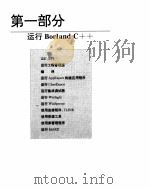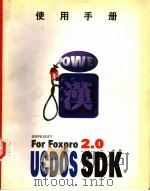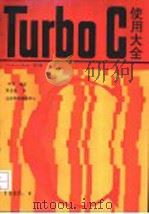《Visual C++ 2.0使用手册 中国大陆版》
| 作者 | (美)ChrisH.Pappas,(美)WilliamH.M 编者 |
|---|---|
| 出版 | 北京:学苑出版社 |
| 参考页数 | 1126 |
| 出版时间 | 1994(求助前请核对) 目录预览 |
| ISBN号 | 7507709760 — 求助条款 |
| PDF编号 | 83840058(仅供预览,未存储实际文件) |
| 求助格式 | 扫描PDF(若分多册发行,每次仅能受理1册) |
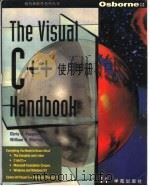
Ⅰ A Quick Start to C and C++ Programming1 THE VISUAL C++ COMPILER PACKAGE3
Recommended Hardware,4
Selecting the Correct Install Options,6
A Typical Windows Installation,8
Documentation,9
The Development System,10
Acknowledgments,13
Important Compiler Features,14
Introduction,15
Compiler Options,18
What's Next?,22
2 GETTING STARTED WITH THE VISUAL C++ WORKBENCH25
Accessing Context-Sensitive Help,26
Starting the Visual C++ Workbench,26
Understanding Menus,27
The File Menu,28
The Edit Menu,33
The Search Menu,35
The Project Menu,39
The Resource Menu,43
The Debug Menu,44
The Tools Menu,49
The Window Menu,52
The Help Menu,53
What's Next?,54
3 WRITING AND COMPILING SIMPLE C/C++ PROGRAMS57
Entering Your First Program,58
Launching the Visual C++ Workbench,58
Editing Your First Program,60
Saving Your First Program,61
Building Your First Program,62
Debugging Your First Program,66
Running Your Program,75
Setting Break Points,78
What's Next?,82
4 ADVANCED VISUAL C++ FEATURES85
Custom Icons,Cursors,and Bitmaps,86
Books Online,91
ZoomIn,94
Debugging and Testing,95
What's Next?,100
Ⅱ C and C++ Programming Foundations5 CAND C++ FOUNDATIONS103
History of C,104
The ANSI C Standard,112
The Evolution of C++ and Object-oriented Programming,114
History of C++,115
The Basic Elements of a C Program,122
6 DATA139
Identifiers,140
Keywords,143
Standard C and C++ Data Types,144
Access Modifiers,153
pascal,cdecl,near,far,and huge Modifiers,156
Data Type Conversions,159
Storage Classes,162
Operators,167
Understanding Operator Precedence Levels,178
Standard C and C++ Libraries,179
7 CONTROL185
Conditional Statements,186
Loop Statements,204
8 WRITING AND USING FUNCTIONS227
Function Prototyping and Style,229
Function Arguments,237
Function Types,247
Arguments for Function main(),254
Important C++ Features,259
Problems Encountered with Scope Rules,264
9 ARRAYS271
What Is an Array?,272
Arrays and C,272
Array Declarations,273
Array Initialization,274
Accessing Array Elements,278
Calculating Array Dimensions(sizeof()),280
Array Index Out of Bounds,283
Output and Input of Strings,284
Multidimensional Arrays,287
Arrays as Function Arguments,290
String Functions and Character Arrays,299
10 POINERS309
Defining Pointer Variables,310
Pointers to Functions,335
Dynamic Memory,339
Pointers and Arrays,346
The C++ Reference Type,360
11 COMPLETE I/O IN C365
Stream Functions,369
Low-level Input and Output in C,374
Character Input and Output,375
String Input and Output,378
Integer Input and Output,380
Formatting Output,383
Using fseek(),ftell(),and rewind(),388
Formatting Input,394
12 AN INTRODUCTION TO I/O IN C++399
Streamlining I/O with C++,400
From stream.h to iostream.h,410
13 STRUCTURES,UNIONS,AND MISCELLANEOUS ITEMS429
C and C++ Structures,430
Unions,454
Miscellaneous Items,457
14 ADVANCED C AND C++ PROGRAMMING TOPICS465
Type Compatibility,466
Macros,470
Advanced Preprocessor Statements,476
Conditional Compilation,481
Advanced Preprocessor Operators,483
Proper Use of Header Files,485
Making Header Files More Efficient,486
Precompiled Header Files,487
limits.h and float.h,487
Handling Errors:perror(),488
Memory Models,490
Dynamic Memory Allocation:Linked Lists,492
Ⅲ Foundations for Object-Oriented Programming in C++15 AN INTRODUCTION TO OBJECT-ORIENTED PROGRAMMING501
There Is Nothing New Under the Sun,502
Traditional Structured Programming,503
Object-oriented Programming,504
C++ and Object-oriented Programming,505
Object-oriented Terminology,506
A First Look at the C++ Class,509
16 C++ CLASSES523
Additional Class Features,524
Using Operator Overloading,547
Derived Classes,551
17 COMPLETE I/O IN C++559
enum Types,560
Reference Variables,561
Default Arguments,564
memset(),565
Formatting Output,566
C/C++ I/O Options,571
iostream Class List,572
Binary Files,585
Combining C and C++ Code Using extern"C",587
Writing Your Own Manipulators,589
18 WORKING IN AN OBJECT-ORIENTED ENVIRONMENT597
An Object-oriented Stack in C++,598
An Object-oriented Linked List in C++,602
More Object-oriented C++,621
Ⅳ System Access,Libraries,and Mixed Language Interface19 POWER PROGRAMMING:TAPPING IMPORTANT C AND C++ LIBRARIES625
Microsoft C and C++ Header Files,626
The Standard Library Functions(stdlib.h),627
The Character Functions(ctype.h),637
The String Functions(string.h),643
The Math Functions(math.h),652
The Time Functions(time.h),655
System-dependent Functions,662
20 BINDING MICROSOFT C/C++ AND ASSEMBLY LANGUAGE673
Inline Assembly Language,674
Creating C/C++ and Assembly Language Modules,681
Ⅴ Windows Programming Foundations21 GENERIC CONCEPTS AND TOOLS FOR WINDOWS701
The Language of Windows,702
Windows Programming:Concepts and Vocabulary,712
The Microsoft Visual C++ Windows Tools,727
22 PROCEDURE-ORIENTED DEVELOPMENT:WRITING WINDOWS APPLICATIONS IN C751
A Framework for All Applications,752
Make or project Utility?,768
A Simple Application and Template,770
Using the SWA to Develop a Sine Wave Application,779
Creating a Windows Pie Chart Application,784
More on Traditional C Windows Programming,799
23 OBJECT-ORIENTED DEVELOPMENT:THE FOUNDATION CLASS LIBRARY801
The Need for a Foundation Class Library,803
Foundation Class Library Design Considerations,803
Key Foundation Class Library Features,804
It All Begins with CObject,805
Important Foundation Library Classes,808
A Simplified Application,809
A Simplified Design Ensures Easy Maintenance,815
24 OBJECT-ORIENTED DEVELOPMENT:WRITING FOUNDATION CLASS LIBRARY APPLICATIONS IN C++817
A Simple Application and Template,818
Drawing Graphics Primitives in a Window,823
A Scientific Waveform with a Menu and Dialog Boxes,831
A Bar Chart with a Menu and Dialog Boxes,849
Ⅳ Windows NT Programming Techniques25 WINDOWS NT:WRITING SIMPLE APPLICATIONS871
Important Changes for Porting to Windows NT,873
The NTSWP Application Template,875
Adding Resources,888
26 WRITING FOUNDATION CLASS LIBRARY APPLICATIONS FOR THE WINDOWS NT ENVIRONMENT903
Why Use a Class Library with Windows NT?,904
Microsoft Foundation Class Library Features That Apply to Windows NT,905
A Simple MFC Application That Experiments with Several Graphics Drawing Primitives,906
A Scientific Plot with Resources:Menu,Dialog Box,and Multimedia Sound,913
A Business Chart with Resources:Menu,Dialog Box,and Multimedia Sound,930
What's Left?,949
Ⅶ Wizards27 APPLICATION AND CLASS WIZARDS953
Using Wizards,955
Building the Application,962
Working with AppWizard-Generated Code,964
Example #1:Drawing in the Client Area,975
Example #2:A Simple Word Processor,980
Working with AppWizard-Generated Code,986
What's Next?,1000
28 AN INTRODUCTION TO OBJECT LINKING AND EMBEDDING(OLE)1003
New OLE Features and Specifications,1005
Building a Container Application,1012
Building a Server Application,1035
Working with the Container and Server Applications,1056
What Now?,1059
Ⅷ AppendixesA EXTENDED ASCII TABLE1063
B DOS 10H,21H,AND 33H INTERRUPT PARAMETERS1071
Interface Control of the CRT,1072
Screen Control with BIOS-type 10H Interrupts,1072
Handling Characters,1073
Graphics Interface,1074
ASCII Teletype Output,1074
Specifications and Requirements for the DOS 21 H Interrupt,1075
Mouse Control Functions Accessed Through Interrupt 33H,1080
C CREATING DYNAMIC LINK LIBRARIES1085
Creating a Dynamic Link Library,1086
Creating an Application That Calls a DLL,1089
D CREATING CUSTOM CONTROLS FOR WINDOWS1097
A Custom Control in a DLL,1098
An Application That Uses a Custom Control,1106
Testing the Custom Control,1112
INDEX1115
1994《Visual C++ 2.0使用手册 中国大陆版》由于是年代较久的资料都绝版了,几乎不可能购买到实物。如果大家为了学习确实需要,可向博主求助其电子版PDF文件(由(美)ChrisH.Pappas,(美)WilliamH.M 1994 北京:学苑出版社 出版的版本) 。对合法合规的求助,我会当即受理并将下载地址发送给你。
高度相关资料
-

- 计算机连网技术大全
- 1998 机械工业出版社;西蒙与舒斯特国际出版公司
-
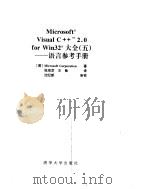
- Microsoft Visual C++ 2.0 for win32大全 5 语言参考手册
- 北京市:清华大学出版社
-
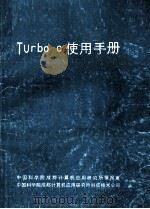
- Turbo C使用手册
- 中国科学院成都计算机应用研究所情报室
-
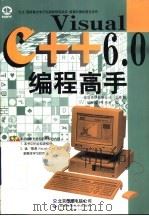
- Visual C++ 6.0编程高手
- 1999 北京:北京希望电脑公司;北京:北京希望电子出版社
-
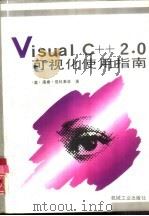
- Visual C++ 2.0可视化使用指南
- 1995 北京:机械工业出版社
-
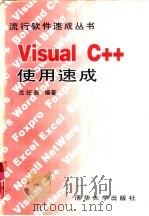
- Visual C++使用速成
- 1996 北京:清华大学出版社
-
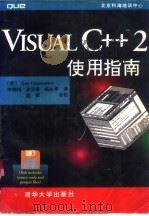
- Visual C++2使用指南
- 1995 北京:清华大学出版社
-
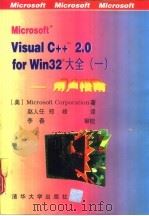
- Microsoft Visual C++ 2.0 for Win32大全 1 用户指南
- 1996 北京:清华大学出版社
-
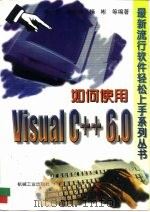
- 如何使用Visual C++ 6.0
- 1999 北京:机械工业出版社
-
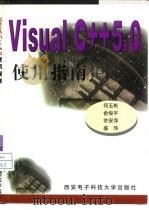
- Visual C++5.0使用指南
- 1998 西安:西安电子科技大学出版社
提示:百度云已更名为百度网盘(百度盘),天翼云盘、微盘下载地址……暂未提供。➥ PDF文字可复制化或转WORD


